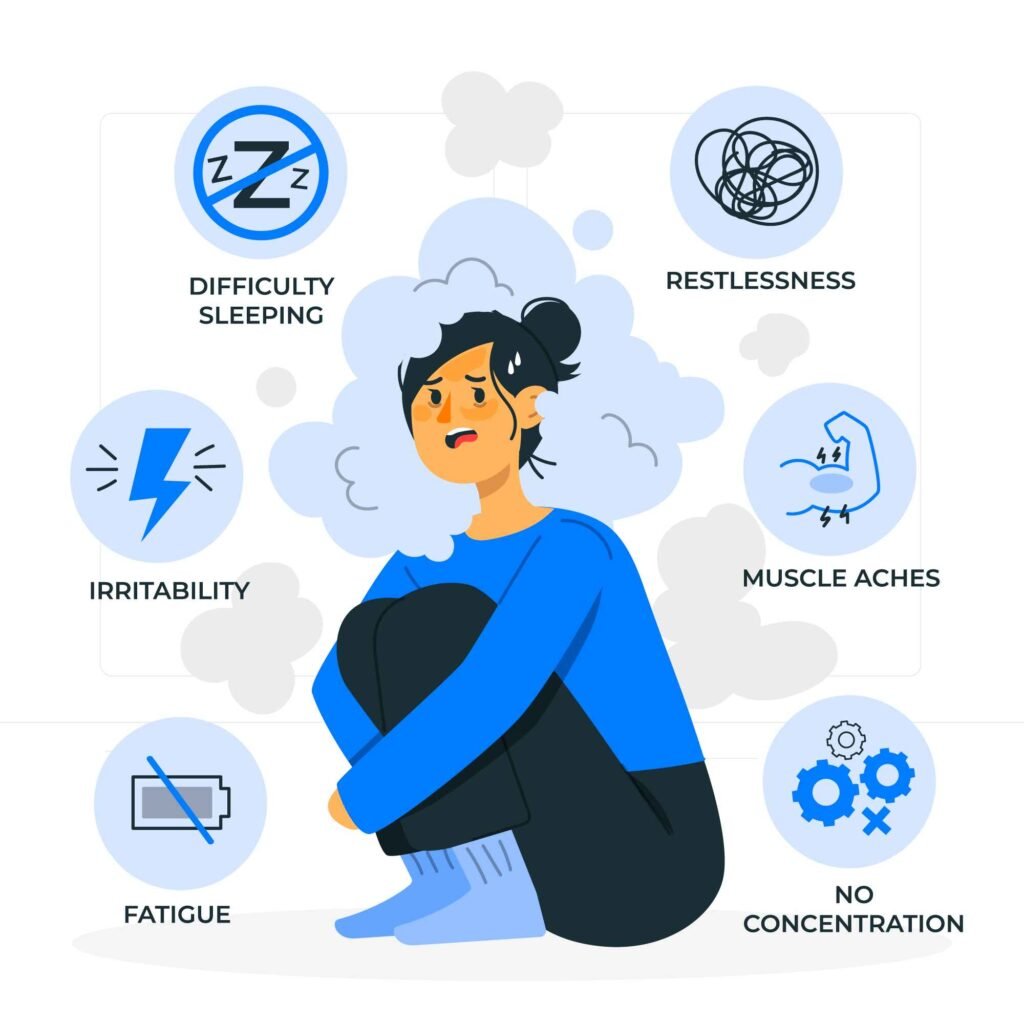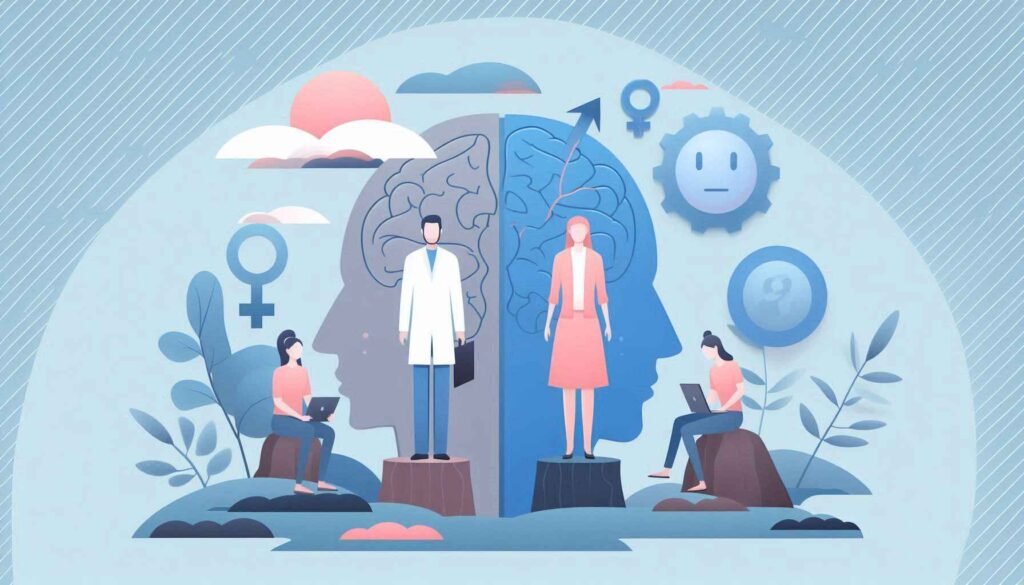
Understanding Schema Therapy
Understanding Schema Therapy: A Comprehensive Guide to Healing and Growth
Schema therapy is a cutting-edge, integrative psychotherapy approach designed to help individuals break free from deeply ingrained negative thought patterns and behaviors. By addressing the root causes of emotional challenges, it offers a pathway to long-term healing and personal growth. This article delves into schema therapy, explaining its principles, benefits, and techniques, while focusing on human-friendly, SEO-optimized language to enhance its accessibility.
What is Schema Therapy?
Schema therapy, developed by Dr. Jeffrey Young, combines elements of cognitive-behavioral therapy (CBT), psychodynamic approaches, and experiential techniques. Its goal is to identify and transform maladaptive schemas—long-standing patterns of thinking and feeling rooted in early life experiences.
Schemas develop as a response to unmet emotional needs during childhood. These schemas often manifest as negative core beliefs about oneself, others, or the world, influencing behavior and relationships in adulthood. Common schemas include abandonment, mistrust, and failure.
How Schema Therapy Works
Schema therapy operates on the premise that understanding and healing early emotional wounds is crucial for overcoming present difficulties. The therapy process involves three main components:
- Identifying Schemas:
The first step in schema therapy is recognizing the specific schemas affecting an individual. This process often includes questionnaires, interviews, and reflective exercises to uncover deep-seated beliefs and patterns. - Understanding Schema Modes:
Schema modes refer to the emotional states or mindsets that individuals cycle through in response to their schemas. These modes include:- Child Modes: Reflect unmet needs, such as vulnerability or anger.
- Dysfunctional Coping Modes: Behaviors like avoidance or overcompensation to deal with pain.
- Healthy Adult Mode: Represents a balanced, nurturing approach to self and others.
- Schema Healing Techniques:
Therapists use a combination of strategies, including cognitive restructuring, imagery rescripting, and experiential exercises, to address and heal schemas.
The Core Emotional Needs in Schema Therapy
Schema therapy emphasizes meeting five core emotional needs:
- Secure Attachment:
Individuals need consistent love, attention, and validation from caregivers. When this need is unmet, schemas like abandonment and mistrust develop. - Autonomy and Competence:
Feeling capable and independent is essential for healthy self-esteem. Overprotective or critical parenting can lead to schemas of dependency or failure. - Freedom to Express Needs:
Suppressing emotions or desires due to strict or neglectful environments can create schemas of emotional deprivation. - Spontaneity and Play:
A lack of opportunities for fun and creativity in childhood can result in rigidity or emotional inhibition. - Realistic Limits and Self-Control:
Overindulgence or neglect in setting boundaries can cause difficulty with impulse control or responsibility.
Benefits of Schema Therapy
Schema therapy has proven highly effective in treating a range of psychological challenges:
- Improved Emotional Regulation:
By addressing the root of emotional pain, schema therapy helps individuals manage their feelings more effectively. - Enhanced Relationships:
Understanding and transforming negative schemas improve communication and intimacy in relationships. - Long-Lasting Results:
Unlike short-term therapies, schema therapy focuses on deep, lasting change by tackling the origins of problems. - Versatility:
Schema therapy can be adapted for various mental health conditions, including personality disorders, depression, and anxiety.
Who Can Benefit from Schema Therapy?
While schema therapy is particularly beneficial for individuals with personality disorders, it can also help those struggling with:
- Chronic depression or anxiety
- Low self-esteem
- Trauma or abuse histories
- Relationship difficulties
Common Maladaptive Schemas and Their Impact
In schema therapy, recognizing maladaptive schemas is critical for achieving lasting change. These schemas can shape how we perceive ourselves, our relationships, and the world around us. Here are some of the most common schemas and how they impact daily life:
1. Abandonment/Instability Schema
- Definition: A deep fear that people you rely on will leave or not be emotionally available.
- Impact: This schema often leads to anxiety in relationships, clinginess, or pushing people away to avoid getting hurt.
2. Mistrust/Abuse Schema
- Definition: Believing others will harm, betray, or take advantage of you.
- Impact: This schema results in suspicion, difficulty trusting others, and defensiveness, which can strain personal relationships.
3. Emotional Deprivation Schema
- Definition: The belief that emotional needs for love, support, or understanding will never be met.
- Impact: Individuals with this schema may feel chronically lonely, misunderstood, or undervalued.
4. Defectiveness/Shame Schema
- Definition: A core belief that you are fundamentally flawed or unworthy of love.
- Impact: This leads to feelings of shame, low self-worth, and self-sabotaging behaviors.
5. Failure Schema
- Definition: Believing you are inadequate and will inevitably fail.
- Impact: This schema causes procrastination, lack of ambition, and avoidance of challenges.
Understanding these schemas helps individuals recognize patterns that may be holding them back from personal growth and fulfilling relationships.
Techniques Used in Schema Therapy
Schema therapy integrates multiple techniques to help individuals address and heal their maladaptive schemas. Here are the key techniques used by therapists to promote healing and growth:
1. Cognitive Restructuring
- What It Is: A technique that challenges and changes negative thought patterns.
- How It Works: The therapist helps clients identify irrational beliefs and replace them with healthier, more balanced thoughts.
- Example: Changing the thought “I’m a failure” to “I made a mistake, but I can learn and improve.”
2. Imagery Rescripting
- What It Is: A powerful technique to revisit and alter painful memories.
- How It Works: Clients visualize past experiences and imagine healthier, more nurturing outcomes.
- Example: Reimagining a scene where a caregiver meets a child’s emotional needs instead of neglecting them.
3. Chair Work
- What It Is: A role-playing exercise to explore different aspects of oneself.
- How It Works: Clients use different chairs to represent various modes (e.g., Vulnerable Child, Healthy Adult) and have a dialogue between these parts.
- Example: Confronting the “Critical Parent” mode to empower the “Healthy Adult” mode.
4. Behavioral Pattern Breaking
- What It Is: Encouraging clients to make different, healthier choices in their daily lives.
- How It Works: Identifying specific behaviors that reinforce schemas and replacing them with new, positive behaviors.
- Example: Choosing to express feelings rather than withdrawing in a conflict.
These techniques work together to help individuals understand, challenge, and ultimately heal their maladaptive schemas.
The Role of the Therapeutic Relationship in Schema Therapy
A strong, supportive therapeutic relationship is essential in schema therapy. This relationship helps create a safe environment where clients can address deep emotional wounds.
Reparenting Approach
Schema therapists often use a technique called “limited reparenting.” In this approach, the therapist offers a nurturing, supportive presence to help meet the emotional needs that were unmet during childhood. This helps clients experience what it feels like to have their needs acknowledged and validated.
Building Trust and Safety
For many clients, trust issues are at the heart of their schemas. The therapeutic relationship provides a space where clients can gradually learn to trust again. Through consistent support and empathy, clients can begin to form healthier attachment patterns.
How Schema Therapy Differs from Other Therapies
Schema therapy stands out because of its integrative nature and focus on long-term change. Here’s how it compares to other popular therapeutic approaches:
1. Schema Therapy vs. Cognitive-Behavioral Therapy (CBT)
- CBT: Focuses primarily on identifying and changing present-day thoughts and behaviors.
- Schema Therapy: Goes deeper by addressing the root causes of these patterns and exploring early life experiences.
2. Schema Therapy vs. Psychodynamic Therapy
- Psychodynamic Therapy: Emphasizes unconscious processes and past experiences.
- Schema Therapy: Combines this focus with structured, actionable techniques for healing.
3. Schema Therapy vs. Dialectical Behavior Therapy (DBT)
- DBT: Focuses on emotional regulation and mindfulness, particularly for individuals with borderline personality disorder (BPD).
- Schema Therapy: Offers a broader approach suitable for various personality disorders and chronic mental health issues.
By integrating the best aspects of these therapies, schema therapy offers a comprehensive approach to healing that targets both surface-level symptoms and underlying causes.
Practical Tips for Applying Schema Therapy Principles in Daily Life
Even outside of therapy sessions, individuals can apply schema therapy principles to promote self-awareness and growth. Here are some practical tips:
1. Practice Self-Reflection
Take time to identify recurring patterns in your thoughts and behaviors. Journaling can help uncover schemas and triggers.
2. Challenge Negative Beliefs
When you catch yourself thinking negatively, ask yourself: “Is this thought based on fact, or is it my schema talking?”
3. Cultivate Your Healthy Adult Mode
Engage in activities that promote self-care, self-compassion, and balanced decision-making.
4. Seek Supportive Relationships
Surround yourself with people who offer the emotional support and validation you may have missed in the past.
5. Be Patient with Yourself
Healing schemas takes time. Recognize your progress and celebrate small victories.
The Stages of Healing in Schema Therapy
Schema therapy is a journey of self-discovery and healing. This process takes time, commitment, and a willingness to confront deep-seated emotional wounds. Understanding the stages of healing can provide clarity and encouragement along the way.
1. Awareness and Identification
- What Happens:
In this stage, you work with your therapist to identify your core schemas, triggers, and coping mechanisms. Through discussions, questionnaires, and reflective exercises, you develop a clearer picture of your emotional patterns. - Why It’s Important:
Awareness is the first step to change. Recognizing your schemas helps you understand why certain situations trigger strong emotional reactions.
2. Emotional Processing and Healing
- What Happens:
This stage focuses on working through the emotions connected to your schemas. Techniques like imagery rescripting and chair work help you process past experiences and reframe them. - Why It’s Important:
By addressing suppressed emotions and unmet needs, you begin to release the emotional hold these schemas have on you. This stage is often deeply cathartic and transformative.
3. Cognitive Restructuring
- What Happens:
You learn to challenge and change the negative thoughts associated with your schemas. Your therapist helps you replace irrational beliefs with more balanced and supportive ones. - Why It’s Important:
Cognitive restructuring empowers you to think in healthier ways, reducing the grip of maladaptive schemas.
4. Behavior Change and Pattern Breaking
- What Happens:
In this stage, you start applying new insights and beliefs to real-life situations. You practice making healthier choices and breaking old patterns. - Why It’s Important:
Changing behavior reinforces the progress made in earlier stages and creates new, positive experiences. This stage solidifies long-term change.
Common Challenges in Schema Therapy and How to Overcome Them
Healing from deep-rooted schemas isn’t always smooth sailing. Here are some common challenges people face during schema therapy and strategies for overcoming them:
1. Resistance to Change
- Why It Happens:
Even when schemas are painful, they can feel familiar and safe. The idea of change can trigger anxiety or fear. - How to Overcome It:
Remind yourself of the long-term benefits of healing. Discuss your resistance openly with your therapist to identify and address underlying fears.
2. Emotional Overwhelm
- Why It Happens:
Revisiting painful memories and emotions can be intense. Some people may feel overwhelmed during this process. - How to Overcome It:
Pace yourself. Practice self-care, relaxation techniques, and mindfulness to manage emotional intensity. Trust that your therapist will guide you through the process safely.
3. Relapse into Old Patterns
- Why It Happens:
Breaking long-standing patterns takes time. Occasionally, you may revert to old coping mechanisms. - How to Overcome It:
View setbacks as learning opportunities. Reflect on what triggered the relapse and develop strategies to handle similar situations in the future.
How to Find a Schema Therapist
If you believe schema therapy could benefit you, finding the right therapist is essential. Here are steps to help you find a qualified schema therapist:
1. Research Credentials
Look for therapists who are certified in schema therapy. They should have training from recognized organizations like the International Society of Schema Therapy (ISST).
2. Ask About Experience
Inquire about the therapist’s experience in treating your specific concerns, such as anxiety, depression, or personality disorders.
3. Schedule a Consultation
Most therapists offer an initial consultation. Use this meeting to ask questions, discuss your goals, and see if you feel comfortable with the therapist’s approach.
4. Consider Online Therapy Options
If in-person therapy isn’t accessible, many qualified schema therapists offer online sessions, providing flexibility and convenience.
Real-Life Success Stories from Schema Therapy
Hearing how schema therapy has transformed the lives of others can be inspiring. Here are a few examples of how this approach has helped individuals achieve healing and growth:
1. Overcoming Abandonment Fears
Case: Sarah, a 35-year-old woman, struggled with intense fear of abandonment in her relationships. She often became clingy and anxious, pushing partners away.
Outcome: Through schema therapy, Sarah identified her abandonment schema and worked on developing her Healthy Adult mode. She learned to communicate her needs calmly and built healthier, more secure relationships.
2. Breaking the Cycle of Self-Sabotage
Case: James, a 40-year-old professional, felt like a failure despite his achievements. His defectiveness schema led to procrastination and self-sabotage.
Outcome: With cognitive restructuring and imagery rescripting, James challenged his negative beliefs and took pride in his accomplishments. He now approaches challenges with confidence.
3. Healing from Emotional Deprivation
Case: Maria, a 28-year-old teacher, felt chronically misunderstood and unloved. Her emotional deprivation schema left her feeling isolated.
Outcome: Through limited reparenting and chair work, Maria experienced the nurturing support she missed in childhood. She now surrounds herself with supportive friends and practices self-care.
These stories illustrate that while schema therapy requires effort, it can lead to profound and lasting change.
Self-Care Practices to Support Schema Therapy
While working through schema therapy, integrating self-care practices into your daily life can accelerate healing and promote well-being. Here are some effective self-care strategies:
1. Mindfulness Meditation
- Benefits: Helps you stay present, reduces anxiety, and increases self-awareness.
- How to Practice: Spend 10-15 minutes a day focusing on your breath, sensations, or thoughts without judgment.
2. Journaling
- Benefits: Encourages reflection, helps process emotions, and tracks progress.
- How to Practice: Write about your feelings, triggers, and insights gained during therapy sessions.
3. Exercise and Movement
- Benefits: Releases endorphins, reduces stress, and boosts mood.
- How to Practice: Engage in activities you enjoy, like walking, yoga, or dancing.
4. Connect with Supportive People
- Benefits: Provides validation, encouragement, and a sense of belonging.
- How to Practice: Spend time with friends, join support groups, or participate in community activities.
5. Practice Self-Compassion
- Benefits: Reduces self-criticism and promotes emotional resilience.
- How to Practice: Treat yourself with kindness, especially during difficult moments. Use affirmations like “I am worthy of love and healing.”
Embrace the Journey of Healing with Schema Therapy
Schema therapy offers a transformative path for those ready to break free from lifelong patterns and heal emotional wounds. By understanding your schemas, challenging negative beliefs, and adopting healthier behaviors, you can achieve lasting change and personal growth.
Remember, healing is a journey, not a destination. Be patient with yourself, celebrate your progress, and trust that with the right support, you can create a more fulfilling and balanced life.
This concludes the blog post. If you need further refinements or additional insights, feel free to ask!



